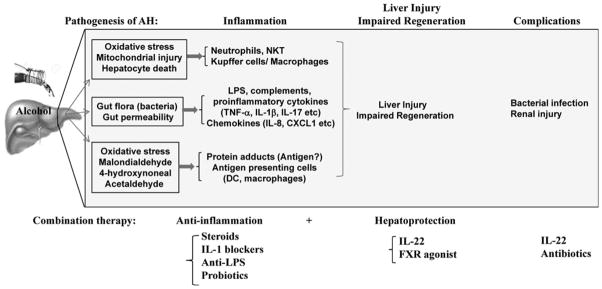Figure 1.
Pathogenesis of AH and potential combination therapy for AH. Pathogenesis: excessive alcohol consumption causes liver inflammation via three major mechanisms. First, alcohol damages hepatocytes, leading to the release of damage-associated molecular patterns that activate inflammatory cells. Second, chronic alcohol consumption results in gut bacterial overgrowth and dysbiosis, an increase in gut permeability, followed by elevation of bacterial products (e.g., LPS) in the liver and subsequent liver inflammation. Third, alcohol metabolites interact with proteins to form protein adducts, which can activate adaptive immunity and trigger liver inflammation. In addition, liver regeneration is impaired in severe AH, but the underlying mechanisms are still not known. Finally, severe AH is accompanied by many complications. Combination therapy: severe AH, which is associated with multiple problems, requires combination therapy. Several types of potential combination therapy are listed.

